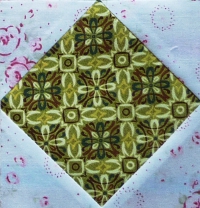What a beautiful word: bounty. It comprises so much. You can express so many things with just this one word.
On the other hand, it is possible to apply it to things that aren’t nearly bountiful. As one might say of the chocolate bar. It is chocolate, and it is coconut. That’s all. If you don’t like either you wouldn’t put it near your mouth.
The famous ship. It received its name with second birth. Originally named Bethia, the British admiralty bought this coal transport ship and rebuilt it into a swimming greenhouse. Its first assignment was to bring breadfruit plants from Tahiti to the Antilles. The slaves there starved and needed badly a staple food with reliable crop. The name of the ship was chosen deliberately. Its journey was an act of bounty from King George III. to his slaves in the West Indies. Considering the incidents that followed (mutiny, flight, burning), one might think the name was given with more wishful thinking than thought.
Bounty is also the name of the next block. While sewing, I understood why, and you will easily see, too.
Strictly speaking, we are talking of four blocks within this block. And it was great fun sewing these very different—in colour and technique—blocks into one bounty block.
In the center: log cabin.
You start with the center square (red) and add strips of fabric in clockwise order. By varying the colour of these strips you can create multiple effects.
·
·
·
On the left: pinwheel.
There are several different techniques to create a pinwheel block—depending on the amount you want to sew in one colour combination. In my case, I needed so few that I cut and sewed the triangles.
·
·
On top: half square.
Very easy and again, I cut and sewed the triangles.
·
·
·
·
On the right: square in a square.
I sewed the white triangles to the green squares.
For all three small blocks is true that there are many (smarter) ways of cutting and sewing them. But only if you need larger amounts of one colour combination.






